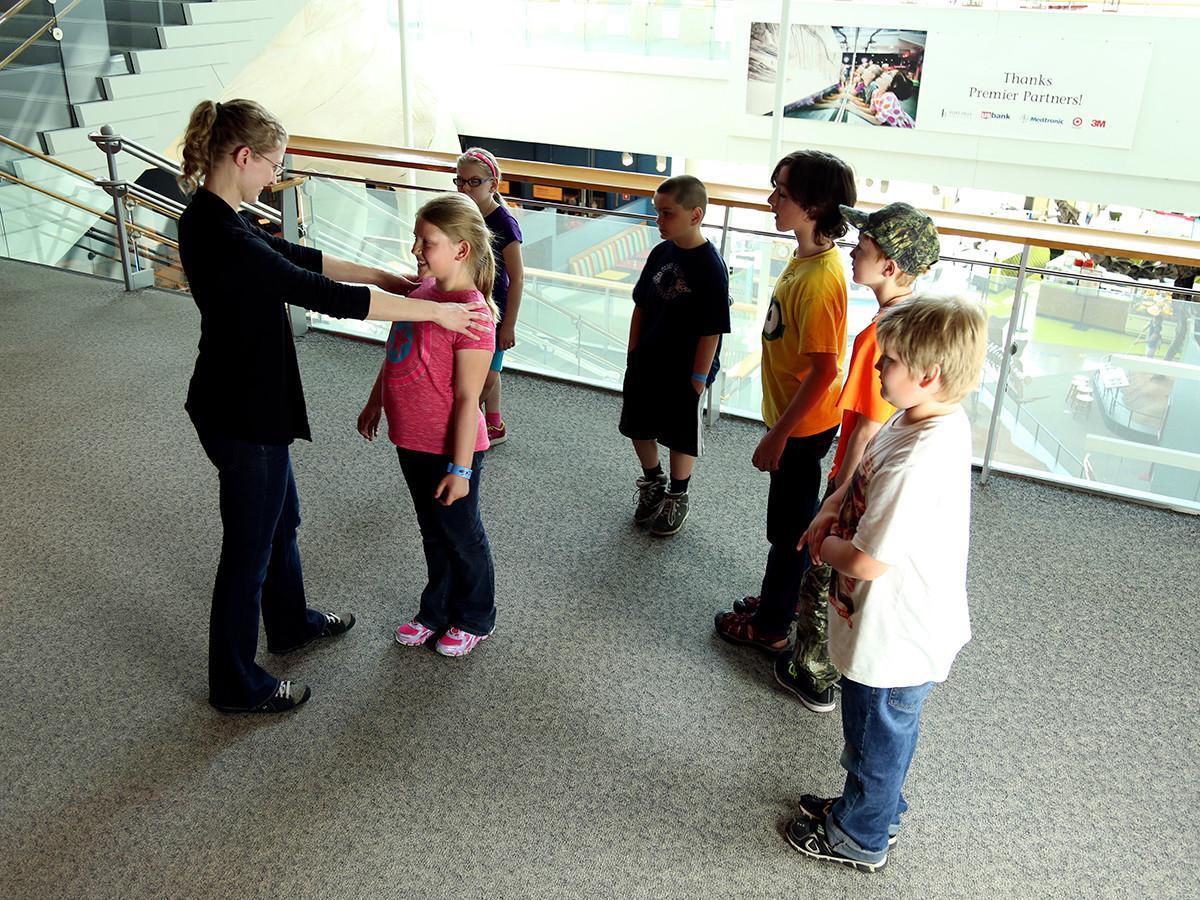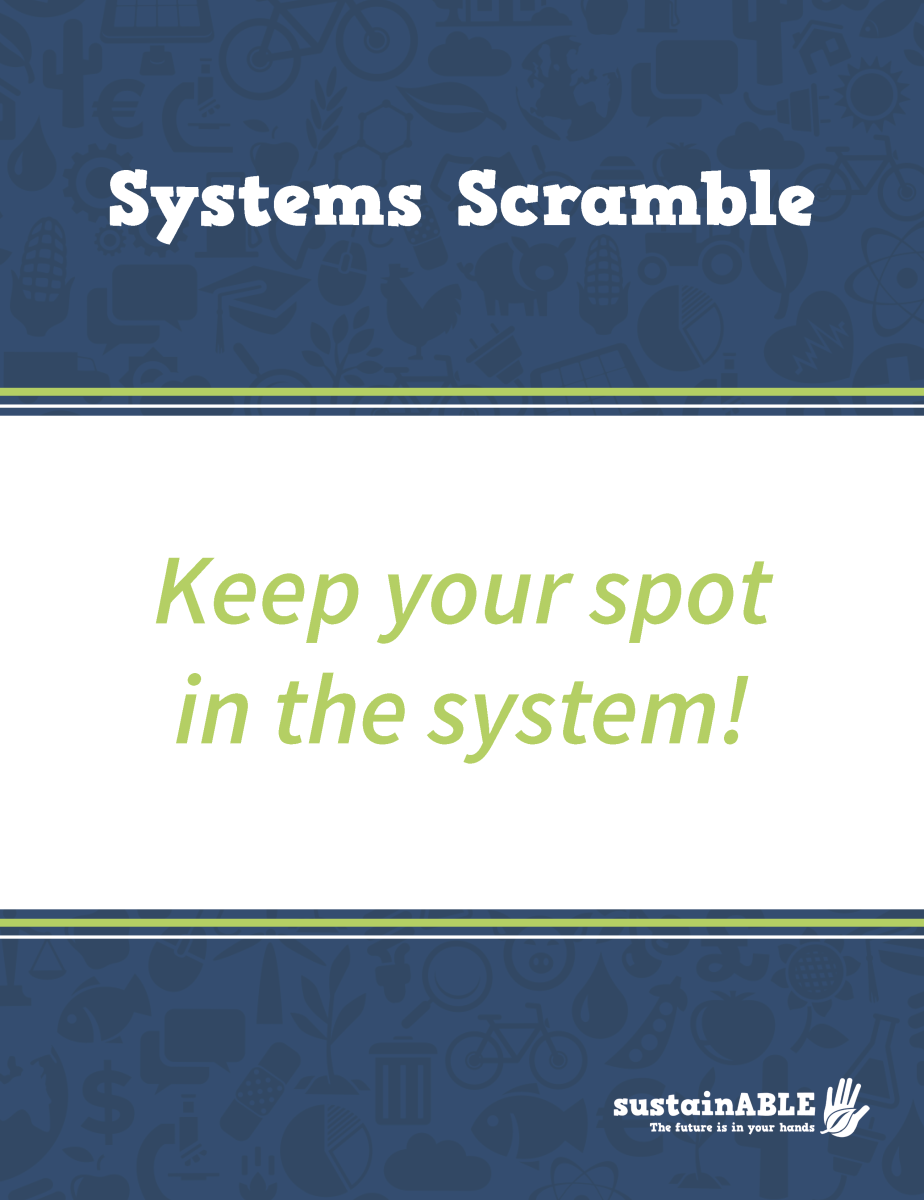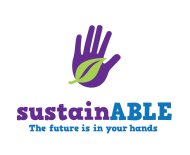DESCRIPTION
This sustainability activity is meant to promote conversation about how systems work, and how we can work together to better understand systems and work toward creating a more sustainable future. Players will actively move around the activity space, figuring out their place in a system, and reevaluating as the system changes. This game it works especially well with camp or school groups. You need at least 8 players for this game, but you can modify it to play with fewer people.
DESCRIPTION
This sustainability activity is meant to promote conversation about how systems work, and how we can work together to better understand systems and work toward creating a more sustainable future. Players will actively move around the activity space, figuring out their place in a system, and reevaluating as the system changes. This game it works especially well with camp or school groups. You need at least 8 players for this game, but you can modify it to play with fewer people.
TRAINING VIDEOS
OBJECTIVES
LEARNING GOALS
Systems thinking helps us understand our complex world and plan for a more sustainable future. Systems have many interrelated parts and connections. We all have a role in creating a more sustainable future.
Systems have many interrelated parts and connections.
We all have a role in creating a more sustainable future.
Credits
Arizona State University
Sustainability in Science Museums is supported by the Walton Sustainability Solutions Initiatives at Arizona State University.
Creative Commons Attribution Non-Commercial Share Alike 3.0 United States (CC BY-NC-SA 3.0 US).
View more details

NISE Network products are developed through an iterative collaborative process that includes scientific review, peer review, and visitor evaluation in accordance with an inclusive audiences approach. Products are designed to be easily edited and adapted for different audiences under a Creative Commons Attribution Non-Commercial Share Alike license. To learn more, visit our Development Process page.



